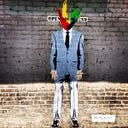Member-only story
The 4 Easter Eggs Hidden In Steve Jobs’ Stanford Address: An Origin Story
Did Steve Jobs know the paradox of the Smartphone from the beginning? Because believe it or not, Jobs left behind a roadmap showing us the narrow path forward in the smartphone era ..
This article explores this question — What if Steve Jobs hid Easter eggs inside The Stanford Address?
What if Jobs understood the dark side of smartphones from the beginning? And then did something about it.
What if Jobs’ Easter eggs are in fact a guidebook for how to understand, survive, and thrive in a life dominated by smartphone technology?
This essay explores these questions. This essay unpacks the origin story at the heart of Jobs’ paradoxical invention. In short, the smartphone has proven to be a world-changer. Will it be a world destroyer?
We’ll dive into these premises today. Steve Jobs hid four Easter eggs his world famous 2005 speech known as The Stanford Address:
- Paradox. The Smartphone — Pain phone dichotomy.
- Dopamine. The itch, not the scratch
- Death. The App store. And the Black Mirror.
- Buddhism. Ariadne’s thread. And the Middle Way
